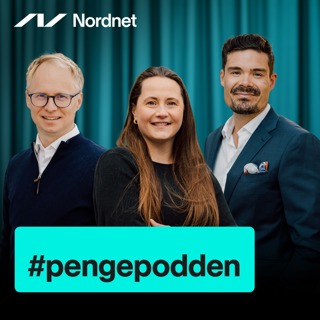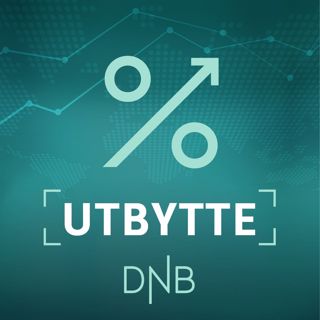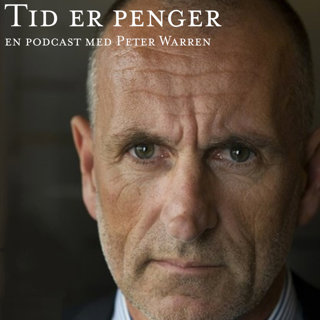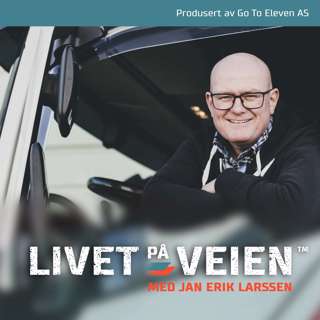
Open source as a privilege of successful businesses with Tom Wilkie
This week on The Business of Open Source, I talked with Tom Wilkie, CTO at Grafana Labs. We talked about how he had a 10-month run building a startup before ultimately joining Grafana in an acquisition — why he thought that was the right move at the time and how it’s developed since then. But Tom has also had a long career in open source businesses, and we had plenty to talk about. My favorite quote: “I’ve always seen open source as a privilege of successful businesses, so I want to be a successful business.” At Kausal, Tom’s first startup, the focus was on financial sustainability from the beginning, and they had $100k in revenue in 10 months before the acquisition by Grafana. At Grafana Labs, everything is done with an eye on revenue — yes, there are tons of open source projects and tons of investment in those projects, but it has to be tied to revenue. Some other things we talked about: Starting an open source company with the explicit goal of being a successful business, which is not what Tom sees all open source companies doingWhy you should probably start with open source code at the beginning if you intend to open source at all, because otherwise your code will get messy and you’ll be too embarrassed to open itHow integrations are the secret sauce that Grafana Labs monetizes — why that it, and how it allows so much code to stay open source without threatening Grafana’s financial successChoosing a SaaS strategy versus choosing an enterprise on-prem strategy — and how you need to be aware of what your competitors are doing when choosing which is right for you. Thanks for listening! I’m Emily Omier, a consultant who works with company on open source strategy related to positioning and product management. If you’re struggling with your strategy around open source — whether you’re unsure how to differentiate in the ecosystem or not sure what to open source — I can help. Learn more here.
31 Jul 202444min

Realistic pros and cons of working with foundations with Mike Milinkovich
This week on The Business of Open Source I spoke with Mike Milinkovich, executive director at the Eclipse Foundation. We had a wide-ranging conversation about the role of open source foundations in the open source ecosystem, especially as related to open source businesses. The existence of open source foundations, and how companies decide to engage (or not) with them, is one of the aspects of open source businesses that is truly unique. Perhaps one of the key things to keep in mind from this conversation is that a foundation’s priority is project sustainability — and that is not always aligned with the goal of increasing profits for a company. On the other hand, there are a lot of advantages to contributing a project to a foundation. But founders should be aware of both the advantages and the constraints that working with a foundation entails. Here are some of the things that stood out from our conversation: Investors want a successful business more than they want a successful project; foundations’ priorities are opposite. You have to take into account commercial/financial interests if you’re thinking about sustainability of a project, because you have to put food on the table; projects take time to maintain.The only community you get around an open source project is the one you build — contributing a project to a foundation is not a magic community pill, and building a community takes work. Running a foundation is not free, so if you’re going to contribute a project to a foundation seriously consider supporting that foundation financially.Your customers should also become sponsors or members of the foundation(s) that your project(s) are hosted under, and you should actively encourage them to do so. Listen to the entire episode for even more insights!
24 Jul 202440min

Controlling your own narrative in a hot market with Vinoth Chandar, founder of Onehouse
This week on The Business of Open Source, I spoke with Vinoth Chandar, the founder and CEO of Onehouse and the creator of Apache Hudi. We took a pretty deep dive into the relationship between Onehouse and Hudi, a topic that for me is at the heart of building a company on top of an open source project. In fact, whether or not Onehouse is an ‘open source company’ could be debatable; Hudi is an Apache project — it’s not owned by Onehouse in anyway — and Onehouse is not a ‘managed Hudi’ or ‘enterprise Hudi.’ Onehouse solves a problem that is fundamentally not the same problem that Hudi solves. Here’s some other take aways from my conversation with Vinoth: There were both technical and business reasons for the relationship between Onehouse and Hudi; Hudi is a library, and you can’t offer a library as a service. Also, Onehouse does way, way more than Hudi.Out of Hudi’s 16 project management committee members, 5 are from Onehouse. Which means both that Onehouse has a significant presence, but also that it can’t completely control the project. The disadvantage of being in a ‘hot’ market, which means there are lots of big players trying to define the narrative around data lakehouses.Starting Onehouse two and a half too late… or was it actually too early? We had a discussion about timing of starting the company, and Vinoth had arguments for why they started the company too late, but also why it might have been too early. Are you giving away too much? The Onehouse board sometimes thinks so; but what Vinoth thinks was a mistake was not spending enough time educating both Hudi users and the larger community about just how much Hudi can do, instead of letting external players define the narrative about what Hudi does. Check out the full episode for more wisdom from Vinoth!
17 Jul 202442min

Thoughtful open source strategies and nailing the OSS/product relationship with Joe Duffy
This week on The Business of Open Source, I spoke with Joe Duffy, co-founder and CEO of Pulumi.We kicked off the conversation by talking about why Pulumi is open source in the first place — a mix of Joe’s long-standing interest in open source and a feeling like a developer tool like Pulumi just has to be open source in order to be taken seriously. But there was another reason, too: Pulumi’s founders weren’t just in it to build a company, they wanted to transform their industry and build a lasting community, and felt like open source was the best way to do that. Lots of good take aways in this episode, like: Learning from open source legends... uh, actually, learning from Microsoft. Microsoft is an open source giant, right? It’s interesting to hear Joe talk about learning about open source business strategy from Microsoft, precisely because Microsoft does not make money directly from VSCode, and also does not invest millions of dollars into R&D just to be nice. “If you’re going to try to build a business with open source, you need to be very thoughtful and very strategic about it.” The founding team at Pulumi sort of iterated on figuring out the business model, but to a large extent they just thought about it until they had an Aha! moment. On the other hand, they didn’t go public until they thought they had a winning strategy for building an open source business. In the case of Pulumi, there’s a client side and a server side, so it made sense to build in a natural division between the two. This also made it so users were less likely to feel like Pulumi was holding back essential features in order to drive sales. “The way I always view it is the thing you’re selling has to stand on its own” Pulumi started a company, an open source project and a commercial product at the same time. Joe’s not sure he would recommend that approach, but it worked for them. “Figuring out the relationship was importnat, but actually the most important thing was to have a successful open source technology.” One thing I wanted to pull out: Even though Pulumi launched the open source project and commercial product at the same time, they focused all their efforts in the first two to three years on getting the open source project off the ground. Many founders I talk to think that once the commercial product is out there, you are forced to build a GTM team… but you don’t have to. In fact, I think the strategy of having the possibility to buy the commercial product while focusing the company’s energy on the open source software in the beginning is brilliant. Result: “We were able to create this immense funnel of inbound commercial interest, even when that wasn’t really the top level focus.” Even if you’re primarily a SaaS company, you can still offer an enterprise on-prem version for customers with hard requirements to host themselves, like air-gapped environments. Just because that option exists doesn’t mean you must build GTM motion for it, though. The business value Pulumi gets from the open source project is: generating leads, building the company’s brand, and also recruiting top-level talent. The fact that developers building the tool are so close to developers in the community is also a huge advantage. Listen to the full episode, it has a huge amount of great insights!
10 Jul 202439min

How to save your company with a license change with Tyler Jewell
This week on The Business of Open Source, I spoke with Tyler Jewell — for the second time, now. Last time I spoke with Tyler, he was an investor at Dell Technologies Capital, he’s since taken over as CEO of Lightbend. We talked about a lot, but there was a definite theme to our conversation: License changes. Lightbend had been running an open core model, with the open core using a permissive Apache license. The company’s open source project, Akka, is massively popular. Lightben had about $13 million in ARR. But it was spending over $20 million per year, mostly of on R&D and then GTM. And they had a churn problem; and the churn problem was that customers would stop buying Lightbend’s product, but they would stay with Akka, because it was good enough. Why did this happen? The added proprietary features weren’t valuable enough for companies to pay for, especially in the face of budget cuts. And because the community was quite mature, it often started to duplicate these capabilities. And then the company faced a near-death experience in 2021. At the same time, usage of Akka was only growing, while the company was facing potential bankruptcy. Investors saw the potential and didn’t want to give up on the company, but it was clear to the board of directors that something needed to change — and that the thing that wasn’t working was the business model. So they changed it. There’s a couple things I hope people can take away from this. If the difference in value between your commercial product and your open source project isn’t big enough, you’ll have a rough time building a profitable company. Sometimes the alternative to changing a license is bankruptcy; bankruptcy ultimately is not in anyone’s best interest, not the company, not the community’s, not the customer’s. Offering a cloud option can work, but it’s an entirely different business, and trying to build it up while the company is in a crisis and expecting it to save the company is only realistic if there’s a good overlap between the market for the cloud offering and the open source project; in this case, there wasn’t good overlap. The license options open to you depend on what the actual software does. And if you’re going to enforce the license at all, you need to have some visibility into where it’s installed, which, again, can be challenging depending on what kind of software you’re dealing with. Changing an open source project’s license is not a trivial undertaking. You have to hold copyright to the code, and you better hope that you’re structured your contributor license agreements correctly. You also have to do the change on a new release — and it’s more likely to work if the new version is different enough from the previous one that people really want to update. If you’re going to make a license change, you might get backlash, but if being transparent and honest can go a long way towards minimizing the PR disaster. So what happened? Churn went down, revenue is nearly doubled and Tyler projects that this year will be cashflow positive. This summary doesn’t do it full justice, though, so check out the full episode!!
3 Jul 202452min

Complementary Projects and Products with Justin Cormack
This week on The Business of Open Source I have an episode I recorded on site at AI-Dev in Paris with Justin Cormack, CTO of Docker. We finally get around to talking about AI at the very end of the episode, but otherwise we talked business and open source and how Docker manages both. Here’s some of the take aways from the episode:There are upsides and downsides to being an open source company, and you should absolutely make sure you are leveraging the upsides. Because they don’t necessarily translate into business value automatically, you have to be intentional to make that happen. It’s often a good idea for open source businesses to create a commercial product that is complementary to their project, so that if usage of one goes up usage / adoption of the other goes up, too. This is in contrast to an open core model, where the open source project can easily end up being crippled so that people are incentivized to buy the closed source license. If you want to get to $100million ARR, you can either sell $10 subscriptions to 10 million people or you can sell $100,000 subscriptions to 1,000 people. Both get you to the same revenue number, but the business model is very different. We also talked AI and open source, given the event we were at.
26 Jun 202448min

Excellent Open Source User Experiences with Karthik Ranganathan
This week on The Business of Open Source, I spoke with Karthik Ranganathan, founder and co-CEO of Yugabyte. This is the second time Karthik has been on the podcast, but since three years had passed I thought it’d be a good idea to catch up and see what’s changed at Yugabyte and how his perspective on the open source commercial ecosystem has changed. Some really cool topics came up in this conversation. For example: Why engineers don’t choose databases based on features (and how this is related to why so many databases are open source This was super interesting, because I’ve seen a lot of conversations in the developer tools space about how developers choose their tools based on the features the tool has, and you should therefore market/sell based on features (unlike marketing/selling to any other market). I think this is bullshit and based on a misunderstanding about the difference between a feature and a benefit. Going back to the database market, we talked about how ultimately database users need to develop an intuition around when a particular database is the best choice, and that it takes time to do so. Choosing a database is about choosing what to prioritize for a particular application, and in a way Yugabyte presents its users/customers with a way to prioritize what’s important, simplicity or flexibility. Companies that want more simplicity get something that’s fully managed (and pay for it) companies that prioritize flexibility above all else are a better fit for the open source. The database is the same, regardless of whether someone is using the pure open source version or the fully managed service — and it’s important to Yugabyte that everyone gets the same core functionality. How the role of open source and it’s value for Yugabyte as a company has changed as the company has matured, and in particular how it’s a way for people to try out Yugabyte first, and then reach out. Why Yugabyte has invested in making sure the open source user experience is excellent — because they want users to get value out of the project immediately; no one has time to spend four days figuring out how a new database works. This is part of why they think the open source project has become a lead engine. The importance of messaging in helping people understand quickly what to expect from the project and minimizing the amount of time it takes for them to get value out of it. Whether or not Yugabyte was a bit early to the cloud native party, and the pros and cons of being early. And much more!
19 Jun 202447min

Ensuring the Difference in Value between Project and Product is Big Enough with André Eriksson
This week on The Business of Open Source, I spoke with André Eriksson, founder and CEO at Encore. We talked about how open source develops trust, something I also discussed in the episode I recorded with Reshma Khilnani. For Encore, it’s subtly different, though. In the case of Medplum, open source is a differentiator in a market that’s used to black boxes, for Encore, open source is tablestakes in a market that won’t adopt a completely proprietary software. We talked about: Launching with a cloud platform from day one — not the open source project. On the other hand, open source is also important because often users and customers have to modify things to get it exactly right; the flexibility is a critical part of the platform’s draw. The challenge getting contributions, which André doesn’t find surprising, especially because it’s a project/product that solves problems for companies, not hobby projects. Having one brand for the open source project and the product, which can make it hard to communicate the difference between them. Ensuring that the open source project and all of the features in it are useable without being dependent on the commercial product — which is not always easy. Finding the right balance between avoiding crippleware and still having enough of a difference in value between the open source and the commercial product to sell it is a core challenge. The biggest risks from open source, which André kicked off by talking about the difference between what you perceive as a big risk and what objectively is — this is a distinction that I think is super important to understand in life and business. Ultimately he settled on a big risk just being that you build something that isn’t valuable or differentiated enough for people to pay for. Communicating the value proposition clearly is their top challenge at the moment. Check out the full episode for some serious insights into what’s working and what’s a struggle at Encore.
12 Jun 202441min





















